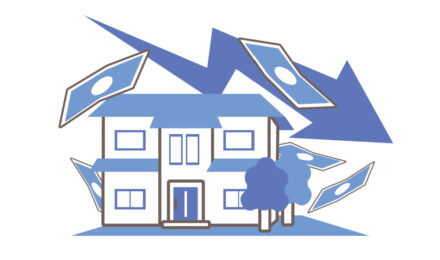Higher education remains a goal for many, but the rising cost of college or university can make it financially out of reach. Student loans—whether from private lenders or the federal government—are a key means of bridging that financial gap and making education attainable.
Private Student Loans
Private loans are one option for covering educational costs. These loans come from private lenders such as banks, credit unions, or sometimes even individuals, including family members. Borrowers request a specific loan amount based on anticipated expenses like tuition, books, housing, and other fees.
Lenders assess a borrower’s creditworthiness by reviewing their financial background, potential degree path, and available assets—such as savings, investments, or family support. Their primary concern is whether the borrower can reliably repay the loan, which often totals thousands of dollars per semester.
Loans from financial institutions typically require formal contracts detailing the loan amount, interest rates, repayment schedule, and other terms. These documents provide legal protection for both parties. Even when borrowing from a relative or friend, it’s strongly recommended to create a written agreement to prevent future disputes or misunderstandings.
Federal Student Loans
Federal loans are another route for financing education. These are offered through the U.S. Department of Education and account for a significant portion of American student debt. As of recent estimates, over 42 million Americans hold a combined $1.3 trillion in federal student loans.
Before 1972, federally-backed student loans were limited. That changed when President Richard Nixon established the Student Loan Marketing Association—commonly known as Sallie Mae. This organization purchased student loans from private banks, allowing the government to fund more students by expanding access to financing.
Initially, the system was designed to improve access to education. However, in the 1990s, the focus shifted. A compromise between President Bill Clinton and Congressional Republicans emphasized profit, introducing fees and interest structures that made student lending more lucrative for financial institutions.
Sallie Mae took steps to expand its influence:
- It encouraged colleges to prioritize federal loans over private financing.
- It lobbied financial aid officers, sometimes using incentives like cruises.
- It employed deceptive practices, including posing as loan advisors to mislead students.
As a result, many borrowers found themselves trapped in loans they could not realistically repay. Monthly payments often failed to cover the accruing interest, causing debt to increase despite regular payments. Over 8 million borrowers are now in default, and around one in four are behind on payments.
Defaulting on a federal loan has serious consequences. The government can garnish up to 15% of a borrower’s income—including wages, tax refunds, and even Social Security benefits. Parents who co-signed loans can also be held liable.
Adding to the challenge, federal student loans are among the only debts that cannot be discharged through bankruptcy. Although Sallie Mae was officially disbanded in 2010, its legacy continues to affect millions of Americans.
Master Promissory Note (MPN)
The Master Promissory Note is a vital component of any federal student loan. It outlines the terms of the loan, including who the borrower is obligated to repay. For Department of Education loans, the MPN clearly states that repayment must be made directly to the Department of Education.
This detail could become important if the Department were ever dissolved. Because the Department does not sell its loans, and the MPN does not allow for reassignment to another lender, borrowers are only obligated to repay the Department itself. If that entity no longer exists, the legal framework for collecting those debts could collapse.
Conclusion
Whether private or federal, student loans are a powerful tool to help pay for college. However, they come with serious obligations and potential pitfalls. Understanding the structure, repayment terms, and history of student lending—especially in the federal system—can help borrowers make informed choices and avoid long-term financial hardship.
Higher education remains a goal for many, but the rising cost of college or university can make it financially out of reach. Student loans—whether from private lenders or the federal government—are a key means of bridging that financial gap and making education attainable.
Private Student Loans
Private loans are one option for covering educational costs. These loans come from private lenders such as banks, credit unions, or sometimes even individuals, including family members. Borrowers request a specific loan amount based on anticipated expenses like tuition, books, housing, and other fees.
Lenders assess a borrower’s creditworthiness by reviewing their financial background, potential degree path, and available assets—such as savings, investments, or family support. Their primary concern is whether the borrower can reliably repay the loan, which often totals thousands of dollars per semester.
Loans from financial institutions typically require formal contracts detailing the loan amount, interest rates, repayment schedule, and other terms. These documents provide legal protection for both parties. Even when borrowing from a relative or friend, it’s strongly recommended to create a written agreement to prevent future disputes or misunderstandings.
Federal Student Loans
Federal loans are another route for financing education. These are offered through the U.S. Department of Education and account for a significant portion of American student debt. As of recent estimates, over 42 million Americans hold a combined $1.3 trillion in federal student loans.
Before 1972, federally-backed student loans were limited. That changed when President Richard Nixon established the Student Loan Marketing Association—commonly known as Sallie Mae. This organization purchased student loans from private banks, allowing the government to fund more students by expanding access to financing.
Initially, the system was designed to improve access to education. However, in the 1990s, the focus shifted. A compromise between President Bill Clinton and Congressional Republicans emphasized profit, introducing fees and interest structures that made student lending more lucrative for financial institutions.
Sallie Mae took steps to expand its influence:
- It encouraged colleges to prioritize federal loans over private financing.
- It lobbied financial aid officers, sometimes using incentives like cruises.
- It employed deceptive practices, including posing as loan advisors to mislead students.
As a result, many borrowers found themselves trapped in loans they could not realistically repay. Monthly payments often failed to cover the accruing interest, causing debt to increase despite regular payments. Over 8 million borrowers are now in default, and around one in four are behind on payments.
Defaulting on a federal loan has serious consequences. The government can garnish up to 15% of a borrower’s income—including wages, tax refunds, and even Social Security benefits. Parents who co-signed loans can also be held liable.
Adding to the challenge, federal student loans are among the only debts that cannot be discharged through bankruptcy. Although Sallie Mae was officially disbanded in 2010, its legacy continues to affect millions of Americans.
Master Promissory Note (MPN)
The Master Promissory Note is a vital component of any federal student loan. It outlines the terms of the loan, including who the borrower is obligated to repay. For Department of Education loans, the MPN clearly states that repayment must be made directly to the Department of Education.
This detail could become important if the Department were ever dissolved. Because the Department does not sell its loans, and the MPN does not allow for reassignment to another lender, borrowers are only obligated to repay the Department itself. If that entity no longer exists, the legal framework for collecting those debts could collapse.
Conclusion
Whether private or federal, student loans are a powerful tool to help pay for college. However, they come with serious obligations and potential pitfalls. Understanding the structure, repayment terms, and history of student lending—especially in the federal system—can help borrowers make informed choices and avoid long-term financial hardship.




